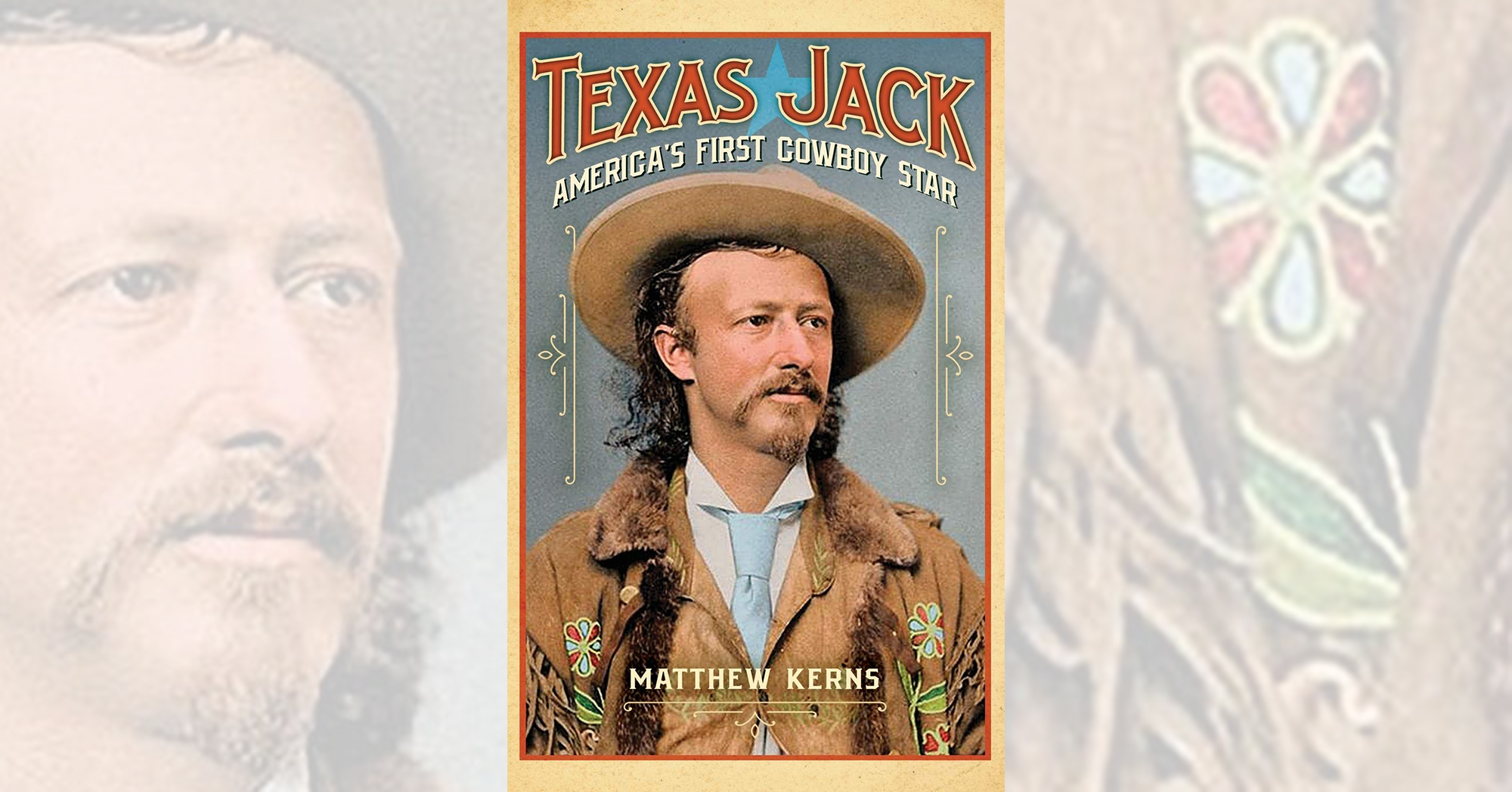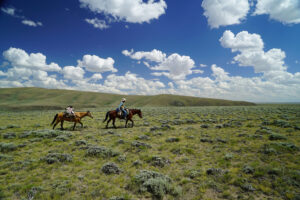Texas Jack: America’s First Cowboy Star, by Matthew Kerns, TwoDot, Guilford, Conn., and Helena, Mont., 2021, $26.95
Long overshadowed by the inimitable William “Buffalo Bill” Cody, John B. “Texas Jack” Omohundro gets his due in this biography of a man who was Cody’s buddy and like Cody was a frontier scout, actor, showman, celebrity and a hero in some of Ned Buntline’s dime novels. Texas Jack was also something Buffalo Bill never was—a genuine cowboy. That, as the title indicates, is the theme for author Matthew Kerns, who manages the Texas Jack Facebook page and has written many articles about Omohundro for The Texas Jack Scout, the triannual publication of the Texas Jack Association. One big difference between the two friends—and this accounts in part for why one is far better known today than the other—is how long they were in the public eye. Cody died at age 70 in 1917; Omohundro was just 33 on June 28, 1880, when he died in Leadville, Colo., probably of consumption (tuberculosis), although pneumonia has most often been listed as the primary cause of his death.
Omohundro packed a lot of living into his short time on Earth. Born in Virginia’s Fluvanna County on July 26, 1846, he served the Confederacy as a courier and scout before heading to Texas, where he first worked as a ranch cook before proving his cowboy skills to trail bosses. Fellow drovers nicknamed the likable cowboy “Happy Jack.” It was up in Ellis County, Kan., that Wild Bill Hickok told Omohundro about the money he could make hunting and scouting out of frontier forts and steered him to his friend Bill Cody. In the fall of 1869 Texas Jack caught up to future pal and business partner Buffalo Bill in North Plate, Neb. Up north, Kerns writes, Omohundro hunted with Cody, taught school and was in demand as an adviser to ranchers about cattle and cattle rustlers due to “his expertise as the best cowboy in the region.” Then along came Ned Buntline. “Texas Jack was a voracious reader and knew of Buntline’s stories of pirates and murderers and heroes,” writes Kerns, who adds it was Omohundro who pointed out the long-haired Cody to Buntline. In time Buntline would include both Buffalo Bill and Texas Jack in his dime novels and stage dramas (starting with The Scouts of the Prairie in December 1872).
While appearing with Cody, Texas Jack met Italian dancer Giuseppina Morlacchi, whom Buntline hired to play the female lead as the “Indian” Dove Eye. Cody and Omohundro pleased audiences by playing themselves, but including the beauty known as the “Peerless Morlacchi” guaranteed ticket sales. She and Jack fell in love. After having appeared repeatedly with Cody, Omohundro began to tour in 1877 without his old friend and partner, starring in such border dramas as Texas Jack in the Black Hills. Costarring in many of his shows was Giuseppina, who married Jack on Aug. 31, 1873, at St. Mary’s Catholic Church in Rochester, N.Y. By the time Buffalo Bill started his famous Wild West extravaganza a decade later, Texas Jack had been dead for three years. Cody went on to achieve his greatest fame offstage while taking his Wild West on tour in the United States and Europe.
While John B. Omohundro is all but forgotten today, Kerns contends that he lives on “in every tourist who tries on a Stetson, every child playing cowboys and Indian,” as well as in every Western book, film and TV show. Clearly the author believes that Texas Jack, “perhaps the only person in Bill Cody’s life who qualified fully as a partner,” epitomizes the 19th-century cowboy. Whether you agree with him or not, the Omohundro story is one worth remembering, and Kerns tells it well.
—Editor
This post contains affiliate links. If you buy something through our site, we might earn a commission.





